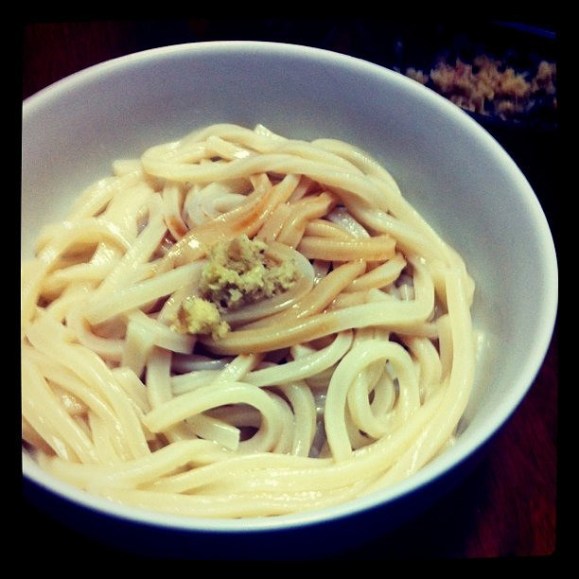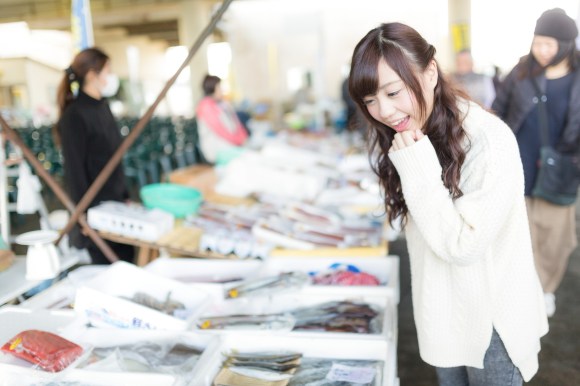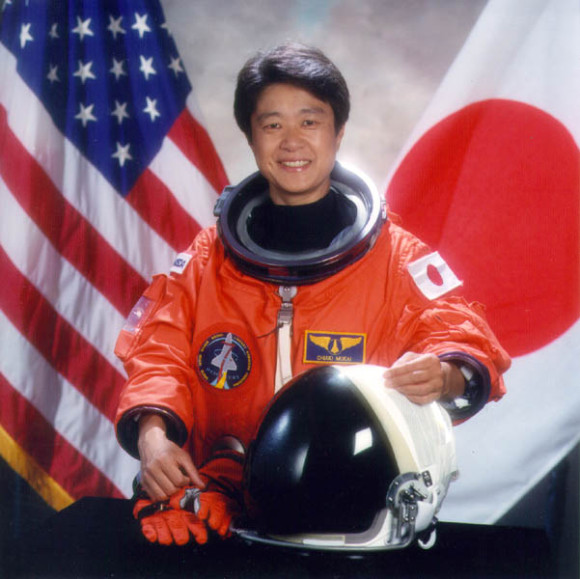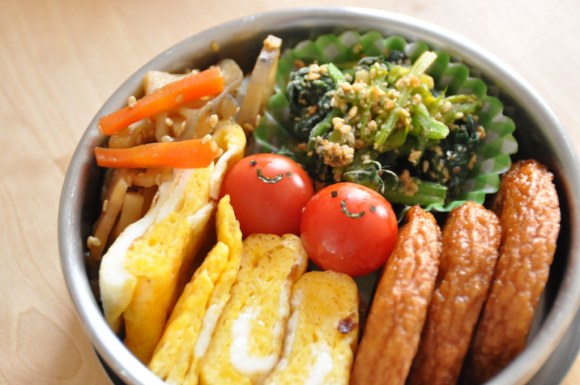
The status of women in Japan is changing and the Japanese language is being modified along with it. Let’s see how women are viewed these days by surveying some of the modern Japanese words used to describe them.
If you’ve been following our Women in Japan Series, you’ll know that we’ve been keeping our finger on the pulse of women’s status in Japanese society, documenting their highs and lows. So we were delighted when asked by Stone Bridge Press to take a look at their 30th Anniversary Edition of Kittredge Cherry’s 1980’s classic Womansword, the new edition which was officially released today.

You may have heard of Cherry’s revealing book, which was first published in 1987. It enjoyed a fair amount of readership in both the U.S. and Japan (where it was translated into Japanese as Nihongo wa onna o dō hyōgenshite kita ka). Womansword is still constantly referred to by feminists, documentarians and others concerned with women’s issues in Japan.
Language is a constantly evolving medium that reflects a society’s changing values. In this anniversary edition, the author notes some of the linguistic changes that have taken place that point to diverging stereotypes of the modern Japanese woman. Using Cherry’s book as a reference, let’s look at some of the Japanese terms that refer to women and see how they’ve changed over the past 30 years, and whether they’ve become more discriminatory, or less.
Which of these buzzwords have you heard, or not heard, before? Do you agree with them?
1. Out with the Christmas cake, in with the New Year’s Noodles 年越し蕎麦
▼ Toshikoshi Udon
Thirty years ago, women were labelled Christmas cake if they weren’t married by the age of 25. That age marker, nuanced by the 25th of December, is also the date after which a Christmas cake is considered old and stale, or past its use-by-date (and yes, they do eat Christmas cake in Japan!). While it’s refreshing that this term is no longer used, the nomenclature it has been replaced with is just as distressing: comparing a woman’s marriageable age to Japanese New Year’s noodles. These noodles, called toshikoshi soba, are eaten on December 31, the last day of the year. So the modern woman who is still unmarried at 31 has merely been given a life sentence six years later. And in addition to turning old and stale like Christmas cake, she’ll also, presumably, now become chewy.
2. Being a Dried Fish Isn’t so Bad 干物女
But there’s nothing wrong with chewy. Consider himono onna, which Cherry informs us is a label that describes some young unmarried women as “dried fish.” This means they are no longer in the market for a mate and have resigned to a more carefree and comfortable lifestyle where they–horror of all horrors–come home from work, kick off their heels, remove their make-up and don something comfy like faux fur cow pajamas or sweats before sitting down in front of the TV and slugging down a cold one! She may put on appearances when outside the house, but once she gets home, it’s all beer and TV (yay!). We can say arigato gozaimasu to the himono onna character from the manga “Hotaru no Hikari” for this one. If you’re left scratching your head and thinking, “But don’t all women throw off their fancy clothes and make-up as soon as they get home?” then perhaps you are a himono onna. With a squirt of lemon.
While the dried fish sobriquet seems a bit odd, you might be humbled to know that before raw fish was de rigueur in Japan, the gourmet food of choice was dried fish. Himono, often soaked in brine first, was sent from the coasts to the Imperial Court in Kyoto and was popular all the way up until the Edo Period (1603). Even now, only the very best himono is offered to the Sun Goddess at Ise Jingu shrine. A step above Christmas cake or New Year’s noodles, to be sure!
3. Here come the Meat-Eating Women! 肉食女子
Interestingly, no disparaging food comparisons apply to men who are not yet married at 30, although the rather sobering epithet shokudanshi or “herbivore men” describes the new milder, weaker, and less macho males of the current generation. These modern grazers could be considered incarnations of Munroe Leaf’s classic Story of Ferdinand where the young bull named Ferdinand prefers to just sit under a tree all day and smell the flowers while the tougher bulls are out showing their vigor in the bullfighting ring. Is it any wonder why Viagra has become such a hit in Japan?
▼Ferdinand the Bull
Screenshot YouTube/CartoonCrazy
So I suppose it’s not surprising that men no longer out to strut their stuff to the ladies are leaving the balance of power to the nishokujoshi, or meat-eating women–who are taking the lead and pursuing men on their own terms. These women definitely weren’t so numerous thirty years ago. So girls, will it be chicken or beef?
4. The Universe is the Limit for Rikejo–理系女子/リケ女
▼ One of the most famous Japanese women in science, Chiaki Mukai, who led the way for Japan’s current “science girls.”
Although the first women to attend university in Japan sat for the exams at Tohoku Imperial University in 1913, and Tokyo Institute of Technology’s first female science student enrolled there in 1931, traditionally, Japanese women have been discouraged from becoming scientists. After all, what man would want a smart woman who might join JAXA and leave him for the moon? Due in part to intensified recruitment by science departments at Japanese universities targeting women through science fairs and workshops, and partly due to government programs to fund scientific research by women, the stigma that the sciences are unfeminine is gradually dissipating and a growing pool of rikejo “science girls” can proudly forge careers in biology, chemistry, physics, astronomy, engineering and technology. These days, the universe is the limit and surely some day women will even jump over the moon.
5. Men appreciating food prepared by their wives: Aisai bento 愛妻弁当
Just when we thought we were getting out of the house and off to far flung locations beyond the stratosphere, married life in Japan threatens to put us back into the kitchen. With such rigorous wifely duties (including taking care of her husband’s elderly parents and performing the daunting task of parenting alone without any physical help from the husband) it’s no wonder more women aren’t jumping right into marriage let alone attempting to hold down full-time jobs at the same time. But once Japanese women do marry, they’ll have another alternative life of making bento lunches for their children to carry to school. And this is no PB&J sandwich slapped together at the last minute! The Japanese home-prepared bento is fancy, cute and nutritionally balanced, requiring many women to wake up early in the morning to cook the fresh morsels and arrange them aesthetically into the lunch box. Kids can expect treats disguised as pandas and little missives from mother that say “Do your best at school today!” hiding behind the tomatoes. Such are the pressures on Japanese mothers to parent even inside the confines of the lunch box.
▼Homemade bento rule #1: It’s gotta be cute!
And since devoted mother is already making these elaborate lunches for her children, we shouldn’t let all that talent go to waste: she may as well make one for her husband. Thus the new edition of Womensword includes aisai bento, or the bento lunch made by one’s loving wife! But aisai refers to the husband’s love for his wife, often a latent realization after years of marriage.
▼ Smiling tomatoes–that’s love for sure.
She may even lace this daintily prepared feast with hearts and chocolates. All I can say is save us all and don’t let Martha Stewart get a hold of this one!
If you’re a man, don’t tell me you’re not just a little bit jealous of the love that goes into making these. (Hmm, I wonder if she ever puts dried fish in them?). But be forewarned, if your wife isn’t happy with you that morning, she just may give you a revenge bento instead.
At any rate, the aisai bento surely leaves the old Meshi! Furo! Neru! (Food! Bath! Bed! the three things husbands are said to demand when they get home from work) in the dust. Maybe aisai furo will be next?
6. Staying active at 40 アラフォー
▼ Kimiko Date made her tennis come back “arafo.”
When a husband starts appreciating his wife’s aisai bento, she may be arafo, or around 40. Perhaps older. Arafo is used to describe active women between the ages of 35-44. Tennis player Kimiko Date was arafo when she made her comeback in tennis while in her late thirties.
Arafo doesn’t have the negative connotations that obatallion does, an epithet used to describe pushy and demanding middle aged women (think of the ladies who rush on to the train to get a seat first!). The word arafo surfaced around 2008 because of a popular TV show called Around 40 on TBS about the single lives of women of this age, perhaps to the same effect that the TV show Thirty-Something had years ago in the U.S.
7. Shining women are all the rage 輝く女性
▼ Yuriko Koike, Tokyo’s first woman governor.
One of the most popular terms being bantered about in the media these days is kagayaku josei, or shining women, which refers to Prime Minister Shinzo Abe’s economic strategy called womenomics, in which he aims to put more women in management positions and to make the Japanese workplace a place where “every woman can shine.” Cherry tells us, however, that Abe wasn’t the first one to use the word womenomics to describe a labor and economy enhanced by the addition of more women. That distinction goes to Kathy Matsui who worked for Goldman Sachs. Some women took offense to the metaphor of shining women (after all, hasn’t anyone noticed that we already shine?!) but the moniker has nonetheless proven popular.
Although Abe has been largely ineffective in securing more urgently needed daycare facilities and creating a more flexible work place for women with children, strides have been made in making more leadership positions open to women. Now, if they could just get the time off of housewifery to fill them!
On Aug. 6, 2016 Yuriko Koike became the first woman governor of Tokyo (although she has served in numerous Cabinet positions since 2003). Yeah, Koike is definitely (still) shining!
Looking at these modern Japanese words to describe womanhood, it becomes obvious that we’ve come a long way, baby! On the other hand, we still have so far to go…
For more fun and insight on Japanese words that describe women, be sure to check out Kittredge Cherry’s 30th Anniversary Edition of Womenswords.
Sources: Tokyo Institute of Technology, Japan Times, New York Times, Womansword: What Japanese Words Say About Women.
Featured image: Pakutaso









 The top 10 traits of “domestic” women in Japan, according to Japanese men
The top 10 traits of “domestic” women in Japan, according to Japanese men 5 powerful reasons to be a woman in Japan 【Women in Japan Series】
5 powerful reasons to be a woman in Japan 【Women in Japan Series】 Is a woman “middle-aged” at 30? 40? 50? Japanese men and women give different answers in poll
Is a woman “middle-aged” at 30? 40? 50? Japanese men and women give different answers in poll Four things women are banned from doing in Japan【Women in Japan Series】
Four things women are banned from doing in Japan【Women in Japan Series】 The Four Lows: Many Japanese women’s new image of the ideal man
The Four Lows: Many Japanese women’s new image of the ideal man Foreigner’s request for help in Tokyo makes us sad for the state of society
Foreigner’s request for help in Tokyo makes us sad for the state of society Seaside scenery, history, and so many desserts on Yokohama’s Akai Kutsu【Japan Loop Buses】
Seaside scenery, history, and so many desserts on Yokohama’s Akai Kutsu【Japan Loop Buses】 Should you add tartar sauce to Japanese curry rice? CoCo Ichi makes diners an unusual offer
Should you add tartar sauce to Japanese curry rice? CoCo Ichi makes diners an unusual offer Japanese city loses residents’ personal data, which was on paper being transported on a windy day
Japanese city loses residents’ personal data, which was on paper being transported on a windy day Akihabara pop-up shop sells goods made by Japanese prison inmates
Akihabara pop-up shop sells goods made by Japanese prison inmates Red light district sushi restaurant in Tokyo shows us just how wrong we were about it
Red light district sushi restaurant in Tokyo shows us just how wrong we were about it Japan’s cooling body wipe sheets want to help you beat the heat, but which work and which don’t?
Japan’s cooling body wipe sheets want to help you beat the heat, but which work and which don’t? Harajuku Station’s beautiful old wooden building is set to return, with a new complex around it
Harajuku Station’s beautiful old wooden building is set to return, with a new complex around it Smash Bros. director Sakurai stabs Kirby in the face, has delicious justification for it
Smash Bros. director Sakurai stabs Kirby in the face, has delicious justification for it Amazing exhibition of Japan’s legendary “cursed katana” is going on right now【Photos】
Amazing exhibition of Japan’s legendary “cursed katana” is going on right now【Photos】 McDonald’s new Happy Meals offer up cute and practical Sanrio lifestyle goods
McDonald’s new Happy Meals offer up cute and practical Sanrio lifestyle goods Japanese ramen restaurants under pressure from new yen banknotes
Japanese ramen restaurants under pressure from new yen banknotes French Fries Bread in Tokyo’s Shibuya becomes a hit on social media
French Fries Bread in Tokyo’s Shibuya becomes a hit on social media Studio Ghibli releases new action figures featuring Nausicaä of the Valley of the Wind characters
Studio Ghibli releases new action figures featuring Nausicaä of the Valley of the Wind characters New private rooms on Tokaido Shinkansen change the way we travel from Tokyo to Kyoto
New private rooms on Tokaido Shinkansen change the way we travel from Tokyo to Kyoto Tokyo Tsukiji fish market site to be redeveloped with 50,000-seat stadium, hotel, shopping center
Tokyo Tsukiji fish market site to be redeveloped with 50,000-seat stadium, hotel, shopping center Beautiful Ghibli sealing wax kits let you create accessories and elegant letter decorations【Pics】
Beautiful Ghibli sealing wax kits let you create accessories and elegant letter decorations【Pics】 Studio Ghibli releases Kiki’s Delivery Service chocolate cake pouches in Japan
Studio Ghibli releases Kiki’s Delivery Service chocolate cake pouches in Japan New definition of “Japanese whiskey” goes into effect to prevent fakes from fooling overseas buyers
New definition of “Japanese whiskey” goes into effect to prevent fakes from fooling overseas buyers Our Japanese reporter visits Costco in the U.S., finds super American and very Japanese things
Our Japanese reporter visits Costco in the U.S., finds super American and very Japanese things All-you-can-drink Starbucks and amazing views part of Tokyo’s new 170 meter-high sky lounge
All-you-can-drink Starbucks and amazing views part of Tokyo’s new 170 meter-high sky lounge More foreign tourists than ever before in history visited Japan last month
More foreign tourists than ever before in history visited Japan last month New Pokémon cakes let you eat your way through Pikachu and all the Eevee evolutions
New Pokémon cakes let you eat your way through Pikachu and all the Eevee evolutions Disney princesses get official manga makeovers for Manga Princess Cafe opening in Tokyo
Disney princesses get official manga makeovers for Manga Princess Cafe opening in Tokyo Sales of Japan’s most convenient train ticket/shopping payment cards suspended indefinitely
Sales of Japan’s most convenient train ticket/shopping payment cards suspended indefinitely Sold-out Studio Ghibli desktop humidifiers are back so Totoro can help you through the dry season
Sold-out Studio Ghibli desktop humidifiers are back so Totoro can help you through the dry season Japanese government to make first change to romanization spelling rules since the 1950s
Japanese government to make first change to romanization spelling rules since the 1950s Ghibli founders Toshio Suzuki and Hayao Miyazaki contribute to Japanese whisky Totoro label design
Ghibli founders Toshio Suzuki and Hayao Miyazaki contribute to Japanese whisky Totoro label design Doraemon found buried at sea as scene from 1993 anime becomes real life【Photos】
Doraemon found buried at sea as scene from 1993 anime becomes real life【Photos】 Tokyo’s most famous Starbucks is closed
Tokyo’s most famous Starbucks is closed One Piece characters’ nationalities revealed, but fans have mixed opinions
One Piece characters’ nationalities revealed, but fans have mixed opinions We asked a Uniqlo employee what four things we should buy and their suggestions didn’t disappoint
We asked a Uniqlo employee what four things we should buy and their suggestions didn’t disappoint Princesses, fruits, and blacksmiths: Study reveals the 30 most unusual family names in Japan
Princesses, fruits, and blacksmiths: Study reveals the 30 most unusual family names in Japan Is the wedding bouquet toss a form of harassment? Some Japanese women say “Yes”
Is the wedding bouquet toss a form of harassment? Some Japanese women say “Yes” The ugly truth of goukon, Japan’s group blind dates
The ugly truth of goukon, Japan’s group blind dates Roughly 40 percent of single Japanese men in their 20s have never been on a date, survey says
Roughly 40 percent of single Japanese men in their 20s have never been on a date, survey says The 5 best Japanese bento to buy at Kyoto Station
The 5 best Japanese bento to buy at Kyoto Station Japanese entertainer shakes fresh cream to make butter… in the most unusual way【Video】
Japanese entertainer shakes fresh cream to make butter… in the most unusual way【Video】 Internet survey sheds light on how Japanese women deal with the hair ‘down there’
Internet survey sheds light on how Japanese women deal with the hair ‘down there’ We tried a gourmet chocolate bento box worth 2,700 yen, and every bite was worth it
We tried a gourmet chocolate bento box worth 2,700 yen, and every bite was worth it Is the ideal spouse someone who’s your best friend or your war buddy? Japanese singles sound off
Is the ideal spouse someone who’s your best friend or your war buddy? Japanese singles sound off Japan: one of the few countries in the world where married couples must have the same surname
Japan: one of the few countries in the world where married couples must have the same surname Japanese guys way more enthusiastic about moving in with girlfriends than vice-versa, survey says
Japanese guys way more enthusiastic about moving in with girlfriends than vice-versa, survey says Is it OK to split the bill on a date in Japan? Survey asks what women and men of different ages think
Is it OK to split the bill on a date in Japan? Survey asks what women and men of different ages think What’s the best way to close the gender gap in Japan? Japanese women weigh in
What’s the best way to close the gender gap in Japan? Japanese women weigh in Why aren’t there more female entrepreneurs in Japan? Pull up a chair… 【Women in Japan Series】
Why aren’t there more female entrepreneurs in Japan? Pull up a chair… 【Women in Japan Series】 Handmade Hayao Miyazaki bento is too cute to eat, great conversation starter during meals
Handmade Hayao Miyazaki bento is too cute to eat, great conversation starter during meals Young Japanese adults in survey don’t even want to live to Japan’s average life expectancy
Young Japanese adults in survey don’t even want to live to Japan’s average life expectancy Tokyo government announces new name for maternity/paternity leave, hopes to change attitudes
Tokyo government announces new name for maternity/paternity leave, hopes to change attitudes
Leave a Reply